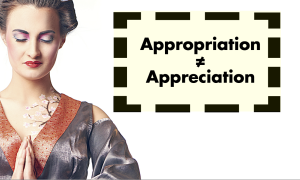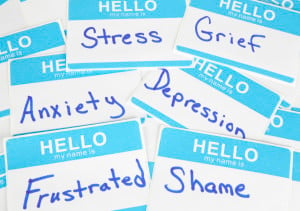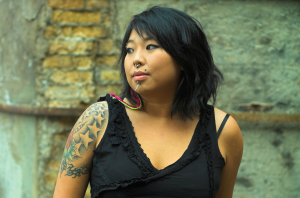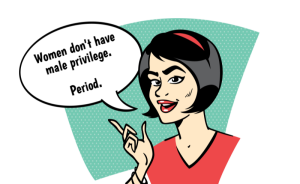
A person closing their eyes with their palms together, wearing an outfit meant to fit a stereotypical “East Asian” image
If someone was trying to help you, but they were unintentionally doing more harm than good, you’d want to tell them, right?
And you’d hope they’d be open to your feedback – after all, you’re not saying they’re a bad person or accusing them of deliberate sabotage. If they really have your best interests at heart, they wouldn’t want to hurt you — right? So if you point out that they’re doing exactly that, then hopefully they’ll stop.
I have the same hopes for you.
If you’re looking for ways to appreciate other cultures, but you haven’t yet thought about how to avoid appropriating them, then it’s possible that you’re doing more harm than good.
Appreciating another culture looks like cultural exchange. You’d have consent to participate in someone else’s culture, and both sides would mutually benefit and gain understanding of each other.
On the other hand, appropriating another culture includes taking from a marginalized group without permission, and usually without respect for or knowledge about their culture.
Let’s use an example. Are you fond of anything from another culture? Maybe you like Navajo fashion designs, South Asian accessories, or Japanese home décor.
Maybe your tastes span all around the globe, and you include an eclectic mix of international styles into your personal self-expression.
You’re not trying to hurt anyone – in fact, you’re trying to appreciate these other cultures.
But I want you to consider the fact that real appreciation would include learning about and listening to the people of those cultures.
Don’t you feel the most appreciated when people listen to you and try to understand your perspective – especially when you’re trying to teach them how to stop hurting you? Well, that’s what people of color do when they speak up about cultural appropriation. We want you to know that you can support and appreciate our cultures without appropriating our cultures.
For example, you could support a Navajo artist by purchasing designs directly from them. You could wear a South Asian bindi when invited to do so at an Indian festival. You could research the meaning of Japanese décor and honor that meaning when you include those items in your home.
You would consider the impact of what you’re doing. For instance, if you’re white and include these items in your Halloween costume, you’d be perpetuating harmful stereotypes about people of color. So instead of treating other people’s cultural items as a masquerade, you stick to using these items as they’re intended.
Cultural appropriation, on the other hand, would look like buying “Navajo-inspired” designs, imitations of South Asian accessories, and decorations labeled “Japanese” from Urban Outfitters. You buy it because it looks cool, and the only people who benefit are you and the corporation that’s mass-producing these items for a profit.
You might think that incorporating these things into your personal style shows appreciation for another culture – but the actual impact of your actions causes more harm than good.
Unfortunately, I’ve heard a lot of people get defensive when confronted about the above behaviors. Many of them say, “But I’m just trying to help!”
So if you really are trying to help, honor, or appreciate the traditions of other cultures, you should know that appropriation is not the way to do it.
But you’re not the one to blame if you were taught some damaging lessons about “connecting” with people of other cultures by taking what they have and claiming it as your own. In the US and other areas dominated by white supremacy, we’re all taught to do things this way.
Now you can make an effort to avoid cultural appropriation by unlearning those toxic lessons, and learning instead to support each other through respectful cultural exchange.
Here are some of the most common ways people end up causing harm through appropriation, even without meaning to – even when they’re just trying to help.
1. Exotifying Other Cultures Because You Think It’s a ‘Compliment’
“You’re so exotic.”
Even though the US is made up of many different cultures, “exotic” is a “compliment” that’s usually only given to people of color.
Which shows why it’s not much of a compliment at all. You may mean it to be, but it actually implies that somebody is “different” – as in, because they’re not white, they don’t seem like they belong here.
But someone else’s culture is just as normal as yours. You only consider it different because it’s not what you’re used to.
Many people of color have had the bizarre experience of seeing their everyday cultural norms treated like exotic adventures.
Say you’re throwing a themed party. You could go with a color theme, like black and white, or a seasonal theme, like Winter Wonderland.
But you decide to go with “Exotic Asia” – encouraging your guests to dress up like geishas, ninjas, and dragon ladies.
You do this because you find “Asia” fascinating. And you think this is just harmless fun, or even better – a “compliment” to Asian people.
But what you’re actually doing is perpetuating harmful stereotypes about East Asian people.
You’re reinforcing the idea that their cultures are strange and different, rather than a normal part of people’s everyday lives. You’re encouraging your guests to see Asian people as one homogenized caricature, as exotic characters to imitate for fun, instead of as real people who are othered in the US on a daily basis.
If you find another culture “fascinating,” that’s not a sign that it’s time to claim it for yourself. Your fascination indicates that you could really use some education around this culture, so that you can treat its people like human beings and not exotic creatures.
2. Creating Your ‘Own Version’ But Calling It By the Same Name
There are many things in this world that we wouldn’t have without inspiration from other cultures – forms of music, dance, food, and more.
But there’s a point where being “inspired” by another culture actually just means misrepresenting that culture, which is a hurtful thing to do.
One of the problems with cultural appropriation is that it often ends up erasing the origins of things people of color have created.
You know how it goes when something gets popular among “the masses” – it spreads and becomes more and more like the status quo, until the meaning is totally distorted and nobody even remembers who started it or what it originally meant.
This often happens with dances that begin in Black communities. A few years ago, it happened when (mostly non-Black) people took over YouTube with videos of what they called “the Harlem Shake.”
This Harlem Shake was bizarre and random, with participants going from motionless and serious to over-the-top and animated in seconds. Many people found it hilarious and fun – and there’s nothing wrong with a trend that gets a lot of people laughing.
However, there’s a problem with calling this “the Harlem Shake.” The Harlem Shake is actually the name of a totally different dance that started in (you guessed it) historically Black Harlem.
Maybe whoever named this new trend after the Harlem Shake thought they were playing homage to an underappreciated form of dance. But hip-hop dance is a vital form of self-expression, resistance, and survival in many Black communities.
And while white folks get recognized for their work all the time (just check out a media awards show list of nominees), it’s sadly quite common for the dominant culture to fail to give Black folks credit for our contributions to society.
It’s cool if you want to encourage appreciation of a particular form of dance. But recognize what it means to the community that created it. Give its creators a signal boost and share videos of them showing off their skills.
And if you’re inspired to come up with your own dance that’s nothing like it, don’t give it the same name.
3. Creating Your ‘Own Version’ But Presenting It As ‘Normalized’
There’s a balance to find here – you don’t want to create something new and use the same name, but there’s also a wrong way to go about modifying another culture’s elements into something different.
From mass producing “fusion food” to commercializing yoga so that middle class white Americans can enjoy it “without the dogma,” there are lots of examples of cultural traditions being transformed for white consumers.
Maybe you think that modifying something for mass consumption would help “normalize” it. Would it still be treated as “other” if white people are doing it, too?
The problem is that these changes are usually based on the idea that the dominant white culture is superior to other cultures.
For instance, some white clothing designers steal designs from Native artists and put them in collections that pair words like “modernized” and “chic” with coded language like “primitive” and “tribal.”
The implication is that when Native people wear this clothing as it’s meant to be worn, their culture is “backwards” and “uncivilized.” But when it’s “updated” for white people’s comfort, it’s acceptable.
Directly supporting Native designers by giving them visibility and compensation for their work is a much better way to appreciate their creations.
People of color shouldn’t need to have our traditions assimilated into the dominant culture in order to be accepted as “normal.” We should be respected exactly as we are.
4. Using Appropriation As a ‘Learning Experience’
Food stamps for a week, a fat suit for an afternoon, a wheelchair for a day – it’s pretty common these days for people in positions of privilege to “try on” marginalized people’s experiences to see what their lives are like.
The intentions behind these challenges are good. The people who do them are often trying to “help” other folks by bringing attention to their plight and learning about their experience.
They’re often applauded for momentarily sacrificing their privilege by “walking in someone else’s shoes.” We share their videos and reflect on how “brave” and “inspirational” they are.
But it would be a mistake to believe you can understand someone else’s experience by appropriating their struggle. It’s better to learn how to be a good ally to them by listening to what they want you to know.
When Ala Ahmad wrote about white non-Muslims wearing the hijab, she explained why these “social experiments” fall short. If you’re a white American, you can’t truly experience what she has by living her entire life as an Arab Muslim in a Western country.
As Ahmad puts it: “One day’s experience cannot compare to a lifetime of being the ‘enemy.’”
What’s worse is that it’s insulting for you to claim you can understand someone else’s experience this way. You’re putting the attention on yourself, and prioritizing your voice instead of listening to the countless people who are out there sharing about their own experiences.
Once again, all you’re really doing is reinforcing a system of hierarchy that puts you above another group.
Because if you can only believe someone’s account of their experiences once you’ve experienced it yourself, then are you saying that all of the marginalized people speaking about their own struggles are untrustworthy?
Is your audience saying that they only believe in oppression when someone from the dominant culture vouches that it’s true?
Eradicating oppression includes getting rid of the bias that has society listening only to dominant voices. It’s great that you want to learn about other cultures – and you can learn a whole lot by listening to the people of that culture.
5. Putting Yourself In Someone Else’s Shoes to Make a Political Statement
You could have the best of intentions by putting yourself in someone else’s metaphorical shoes.
You’re trying to do the opposite of putting attention on yourself. Instead, you want to make a statement of solidarity, to show the world that people who are usually treated as abnormal are actually “just like the rest of us.”
Again, this is a noble goal, but I encourage you to learn more about what solidarity really means before you go about trying to show it with cultural appropriation.
One journalist, Boglarka Balogh, made this mistake when she published a project titled “I Morphed Myself Into Tribal Women To Raise Awareness of Their Secluded Cultures.”
She took photographs of these “tribal” women from various African tribes, but didn’t stop there – she also worked with a graphic designer to create images of herself “transformed” with dark skin and the traditional attire of the women.
The result was appallingly insensitive. She was in blackface, which is horrendous enough on its own. And she also took attention away from the women she was supposedly helping, by inviting viewers to gawk with fascination at her transformation, instead of listening to the women’s voices.
I can’t condemn the journalist’s intentions – I don’t know her, so for all I know, she could be sincere when she says that she had the purest of intentions for helping the other women.
But I can say that there are much more effective ways to offer help, without causing harm in the process. People from the villages she visited have already proven their ability to speak for themselves, so she could have just gone with their words and photos, without centering herself in blackface.
If you’re looking for ways to leverage your privilege to help a marginalized group, try asking them what they need from you. They can tell you what solidarity really means to them.
6. Claiming to ‘Not See Color’ At All
We can agree that segregation’s not cool, right? Maybe you think cultural appropriation is actually a good thing because it means that our cultures blend. If everyone can adopt elements from any other group, does that mean that all things are equal?
Perhaps in a utopian future – but we don’t live in a post-racial world. If you say you’re going to do whatever you want regardless of your skin color because you “don’t see color,” then you’re not recognizing the reality we’re living in.
The appropriation of different elements of religion and spirituality is a touchy subject for this reason. You feel like you should be able to adopt spiritual practices however you want, even if it’s a practice that people of color created.
I know that spirituality is deeply personal, and I’d never say you should stay away from the spiritual practices that feel right to you. But if it feels “right” to practice your spirituality in a way that hurts people of color, you may need to reevaluate why that seems like the best practice for you.
For instance, many non-Native people feel that aspects of Native spiritualities resonate with them.
Some take it further than participating as they’re invited. They appoint themselves as “shamans,” lead other non-Natives through imitations of Native rituals, and sell their distorted version of “Indian spirituality” for a profit, using sacred items that were never meant to be for sale.
If you “don’t see color” when it comes to finding someone to guide you through Native spirituality, you might end up giving more profit to one of these fake shamans instead of getting a real spiritual experience.
When you believe that being “colorblind” is the way to treat all people equally, you’re deliberately ignoring significant differences between how we live our lives and the way we’re treated. You’re not listening to what people of color say about what we need.
Native people already face such high rates of discrimination, and Western society tends to look down on their cultural practices. If you honor who they are as people, instead of refusing to “see” their race, you can recognize that Native spiritualities have a deep significance as a way of helping Native people survive and preserve their traditions.
The US even has a history of forcing Native people to convert to Christianity and give up their spiritual practices. So honoring these practices must include centering Native people and following their leadership.
I’m not saying you can’t participate in any of these things if you’re white. But make sure you’re invited by and listening to Native people instead of diving in by giving your money to a white person who’s just trying to make a profit.
7. Insisting on ‘Appreciating’ When You’ve Been Told You’re Actually Appropriating
Have you noticed a theme through all of these examples? You can avoid appropriation by listening to the people whose culture you want to participate in.
I understand that it hurts to be told you’re causing harm when you’re just trying to be helpful. But when that happens, it’s best to swallow your pride and understand that marginalized people know what’s best for themselves.
We all make mistakes, so it make sense if you were misguided and you participated in appropriation without realizing it could be harmful.
The best response is a sincere apology if people were hurt, and learning from your mistakes so that it doesn’t happen again.
Too many people insist that since their intentions are in the right place, they should get a pass for cultural appropriation.
But it’s one thing if you own up to the fact that you accidentally did something that caused harm, and do your best not to do it again.
It’s an entirely different story if you insist on continuing to appropriate just because you “don’t mean to hurt anyone.”
If you truly care about marginalized people – and you’re not just interested in taking what you like from their cultures without caring about the rest – then a great way to show it is by listening to the difference between appreciating their culture and appropriating it.
Then you’ll know how to participate in cultural exchange with respect and understanding.
***
So, what is the right way to appreciate a culture without appropriation? You may think that by ruling all these options out, I’m saying there is no right way to do it.
In reality, there are lots of alternatives that can help you connect with other traditions without hurting people.
The first step is knowing that your intentions aren’t everything – they don’t make much of a difference in whether or not the impact of your actions is harmful.
But genuinely respectful intentions can help point you in a thoughtful direction. Consider that marginalized communities are each facing different forms of discrimination, stereotyping, and violence. We’re often forced to give up cultural traditions that mean a lot to us in order to survive.
We need positive representation, space to be heard, and tools for expressing pride in our cultures without being ostracized.
It may not seem like it would make a big difference to avoid cultural appropriation, but it would really help us out. You can help change our everyday norms from erasing our individual identities to celebrating them.
A world where we can celebrate our authentic selves is a better world for all of us.
[do_widget id=’text-101′]
Maisha Z. Johnson is the Digital Content Associate and Staff Writer of Everyday Feminism. You can find her writing at the intersections and shamelessly indulging in her obsession with pop culture around the web. Maisha’s past work includes Community United Against Violence (CUAV), the nation’s oldest LGBTQ anti-violence organization, and Fired Up!, a program of California Coalition for Women Prisoners. Through her own project, Inkblot Arts, Maisha taps into the creative arts and digital media to amplify the voices of those often silenced. Like her on Facebook or follow her on Twitter @mzjwords.
Search our 3000+ articles!
Read our articles about:
Our online racial justice training
Used by hundreds of universities, non-profits, and businesses.
Click to learn more




















